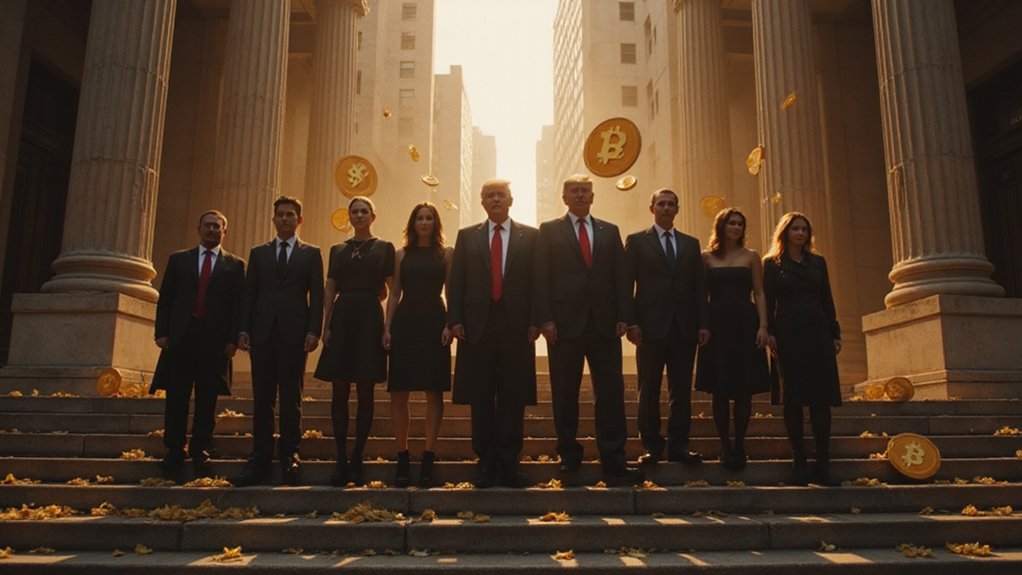The digital gold rush has minted a new aristocracy of unimaginable wealth, where fortunes measured in tens of billions rest precariously on lines of code and the collective faith of millions in mathematical abstractions.
At the apex sits the mysterious Satoshi Nakamoto, whose pseudonymous identity conceals approximately $93 billion in Bitcoin holdings—a fortune that exists entirely in mathematical proof, untouchable yet theoretically more valuable than most sovereign wealth funds.
A $93 billion ghost haunting the blockchain—wealth beyond nations, locked in code, controlled by shadows.
Changpeng “CZ” Zhao commands the throne of accessible wealth, his $29-65.2 billion empire built primarily on Binance‘s dominance as the world’s largest cryptocurrency exchange. The platform processes astronomical trading volumes while CZ’s holdings in Binance Coin (BNB) fluctuate with market sentiment—a reminder that even billionaire status can evaporate with algorithmic precision.
His wealth concentration (over 90% tied to Binance operations) would make traditional diversification advisors weep.
Brian Armstrong’s $11.2 billion fortune demonstrates a more institutional approach through Coinbase‘s regulated platform and the Layer 2 Ethereum network “Base.” His strategy of courting compliance—SOC 2 audits, thorough KYC protocols, and aggressive regulatory lobbying—represents a calculated bet that legitimacy trumps libertarian ideals in wealth preservation.
Chris Larsen’s $4-8 billion valuation swings with his 5.2 billion XRP tokens, creating a peculiar scenario where a co-founder’s net worth operates as a real-time ticker of market confidence in Ripple’s cross-border payment ambitions. Ripple has strategically partnered with 14 central banks for CBDC issuance, positioning the company at the forefront of digital currency infrastructure.
Joseph Lubin’s $1-5 billion estimate reflects Ethereum’s ecosystem expansion through ConsenSys, positioning him as infrastructure royalty in the smart contract revolution. His wealth fluctuates alongside Ethereum’s ecosystem growth while market volatility continues to challenge predictable wealth preservation across the cryptocurrency sector.
These moguls navigate an increasingly complex regulatory landscape through sophisticated compliance strategies. Binance implements triple KYC verification and monthly proof-of-reserves, while Coinbase maintains cold storage protocols that would impress Fort Knox administrators. Despite facing a $4.3 billion settlement for money laundering violations, Binance continues to maintain its position as the industry’s dominant exchange platform.
Their technological innovations—from BNB Chain’s AI integration to Ethereum’s Proof-of-Stake change—continuously reshape the infrastructure supporting their empires.
The irony remains palpable: fortunes exceeding small nations’ GDP rest on technologies designed to eliminate traditional financial intermediaries, yet these titans have become the very centralized authorities their platforms originally sought to circumvent.








